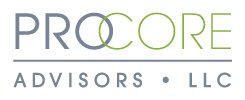
Modernizing your Business
There is so much in the way of new technology that it seems impossible to keep up with it all. There are so many digital tools available to businesses that it can be hard to evaluate what you need and this article certainly isn’t going to be one that helps you choose. All businesses face unique challenges such that making any sort of blanket recommendation would be foolhardy. What I will try to do is give you an idea of how to look at what your business needs.
The first thing to do is to understand who your customers are. I live in Chicago which has America’s oldest tobacco shop, Iwan Ries & Co., founded in 1857. The shop does not look like it has changed since the 60’s or 70’s in terms of décor and it really captures the feel of old Chicago. As a private company it is impossible to gauge their actual sales numbers but much can be gleaned from the fact that they haven’t changed much for decades. They haven’t added e-cigarettes or vape products, in fact they offer the polar opposite, cigars and pipes. This is what their customer base wants and this is what the spirit of their brand is. Iwan Ries has been able to stay in business for such a long time because they understand who their customers are and what they want. Even though it may seem foolish to not add fast-growing product segments to your inventory, if that changes what makes you unique in the market you might want to think twice. Although Iwan Ries is a unique case, it illustrates the importance of know your customers.
Your reputation and unique positioning as a business give you an edge. In a world that is increasingly digital and impersonal, many still crave a personalized experience. This personalized experience can be created digitally and physically. A company called Bear Naked Granola lets customers create their own granola flavor combinations. It uses IBM Watson programming to rate how well the different flavors you choose will go together. Other shops like the Chicago Music Exchange create personalized experiences by having knowledgeable in-store sales representatives who can help customers with whatever they need. Both companies create personalized customer experiences but in very different ways. The example of Bear Naked Granola is probably about as new school as it gets when it comes to technology adoption but that is how they fit into the broader market, by giving people the option to make something customized to their own tastes. This technology adoption can happen in the back office as well.
Back office technology adoption is one of the biggest sources of opportunity for “old-school” businesses. For example, if a business creates accounts for each new customer that tracks what they buy, that business can better target who might be interested in a new product and reduce the amount of time spent on trade promotion because you only target those most likely to make a purchase. These kinds of smart back-office solutions can help a business get an edge by cutting unnecessary costs. For example, Costco ties all purchases to your membership card. By doing so they know what you purchase and can use that data to tailor promotions but more importantly they can digitize all of your receipts in seconds. When you want to return something at Costco you don’t need a receipt, you only need to bring your member ID and the item and they can refund it in minutes. This is both a value-add to customers that gives Costco a competitive edge, as well as a cost reduction measure for Costco because it reduces time spent processing returns.
I hope these few examples will give you some inspiration on how to transform and rethink how your business can operate in this new environment.
The information provided is for guidance and informational purposes only. The articles are not the opinions of ProCore Advisors, LLC.



